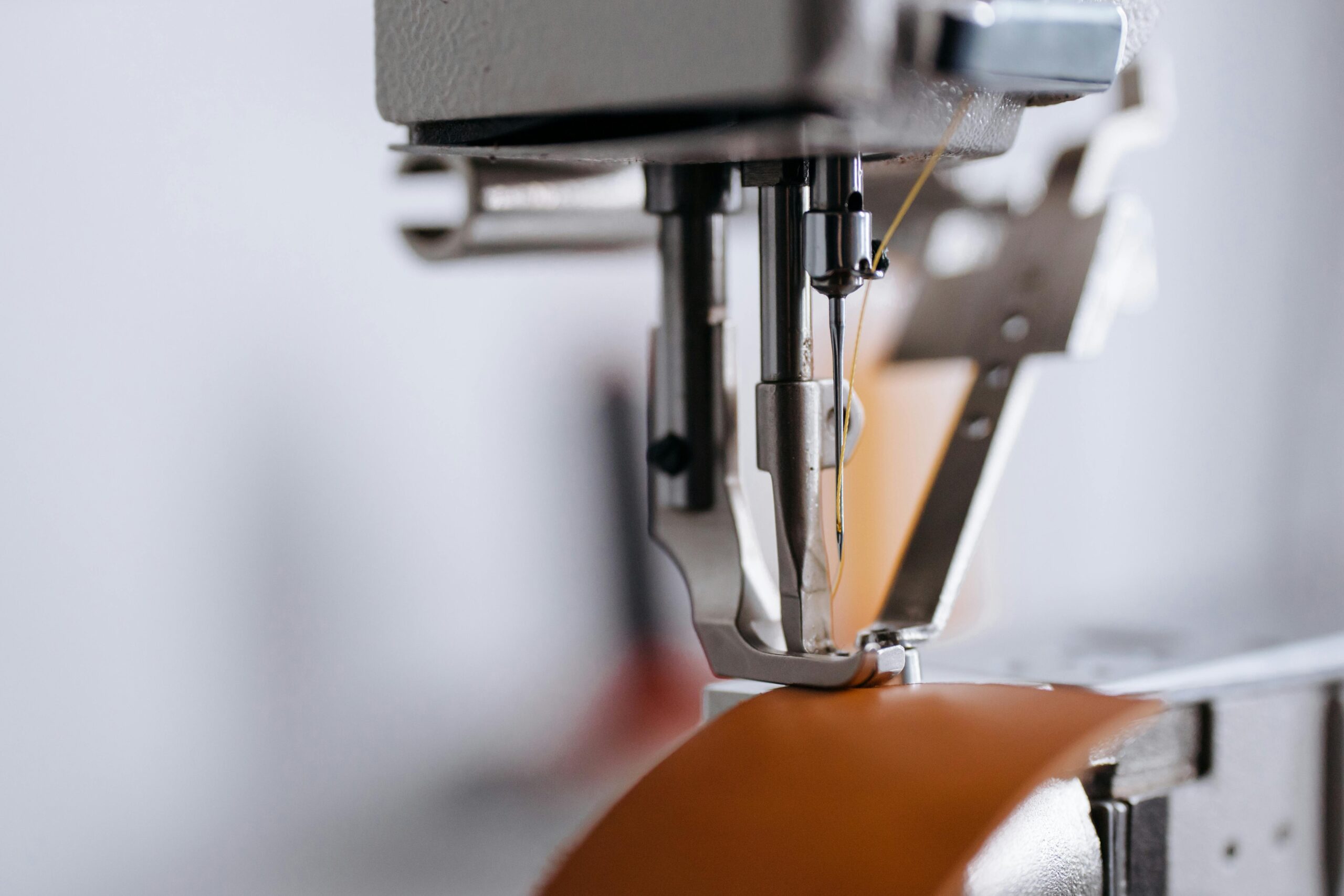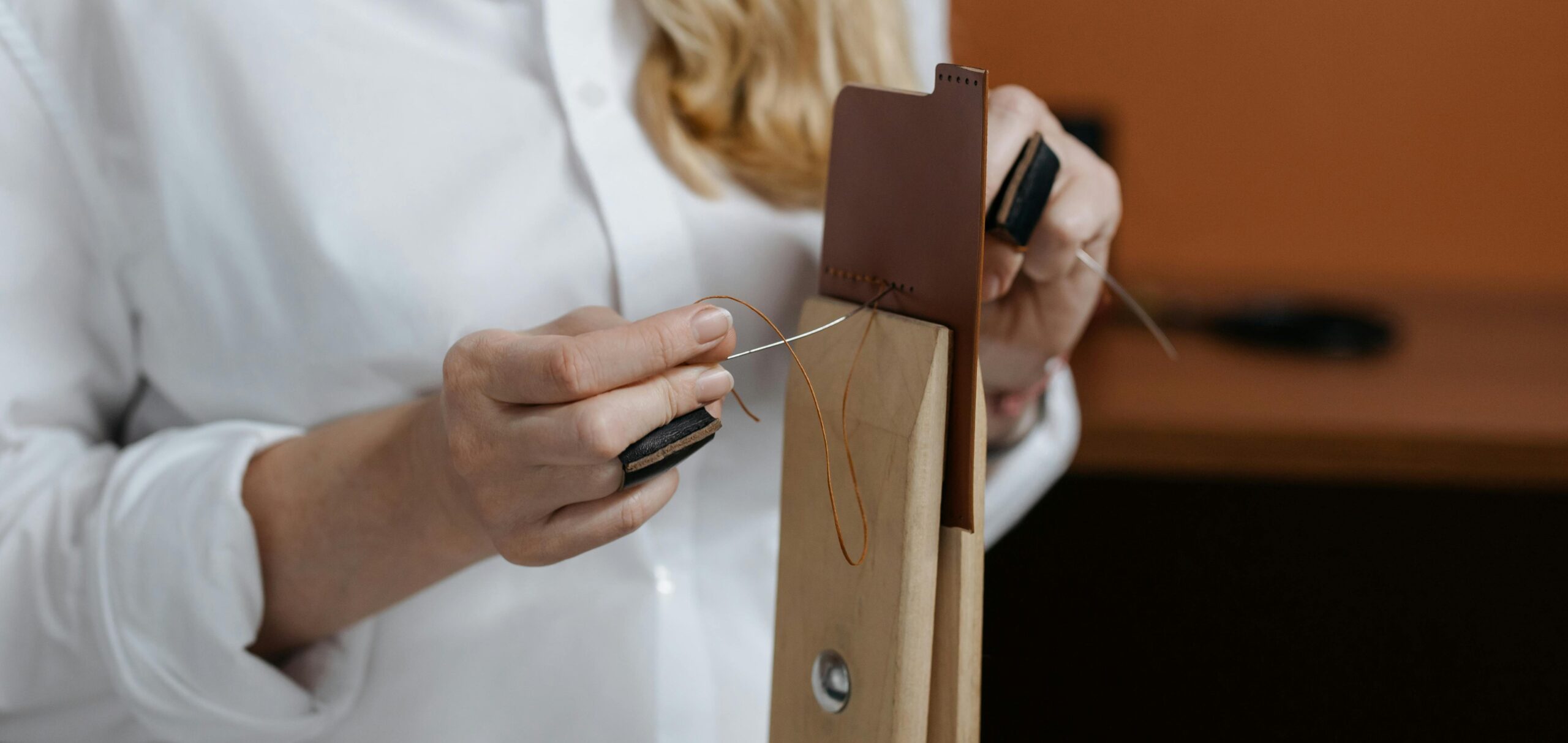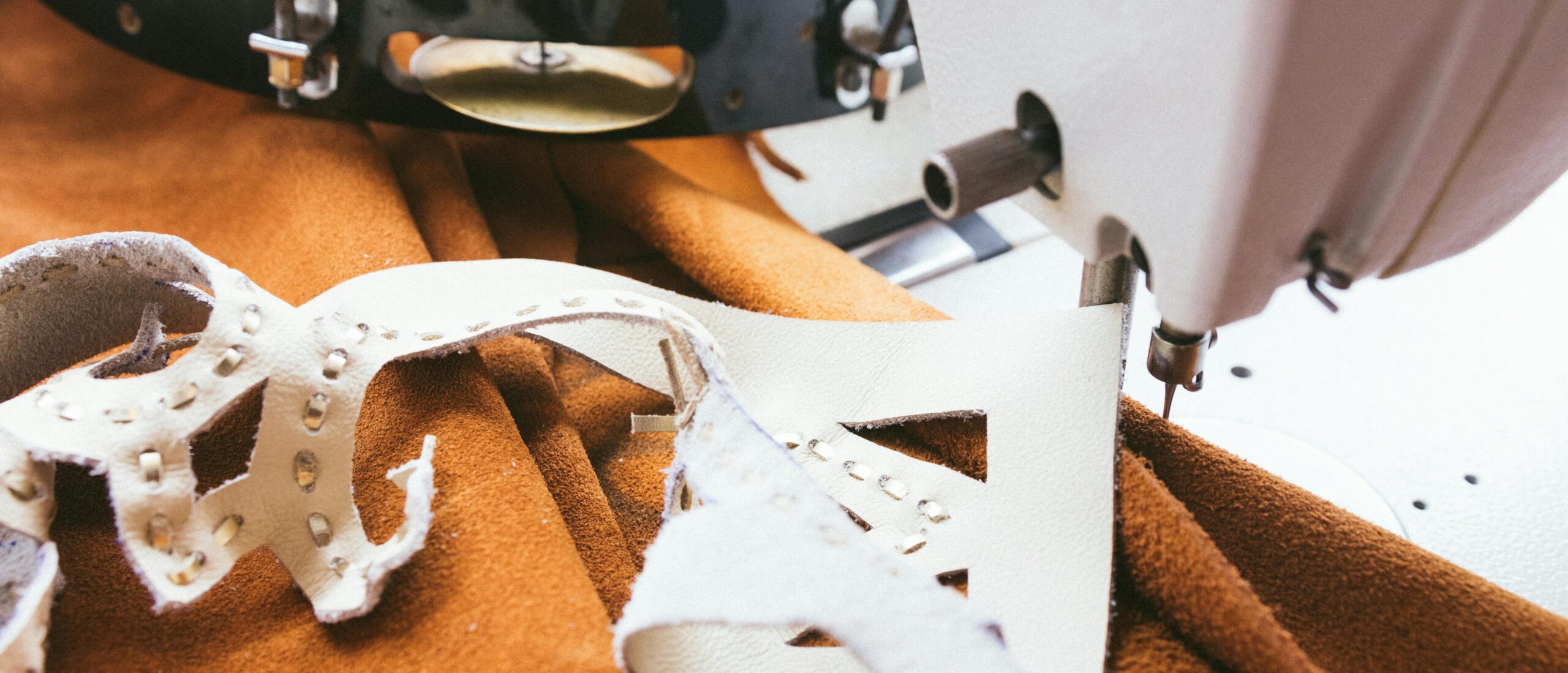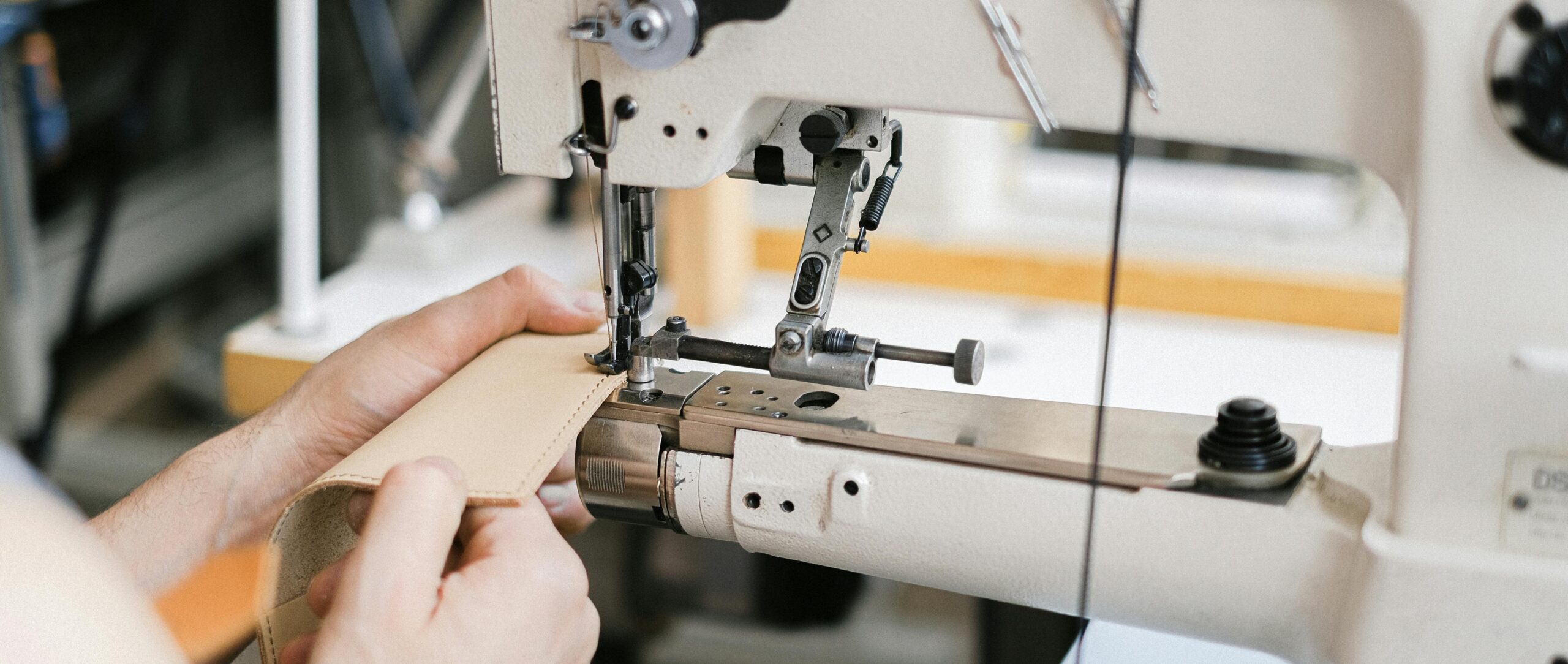
Blog
Methods of Stitching Leather

Leather stitching is a crucial step in the production of leather goods, significantly affecting both the aesthetics and durability of the final product. Here are some common methods of leather stitching:
1. Hand Stitching :
Hand stitching is a traditional method of sewing leather using a needle and specialized thread. This technique is ideal for producing high-quality leather goods due to the precision and control it offers.
Advantages :
– Precision: Enables the creation of intricate and detailed designs.
– Strength: Produces strong and durable seams.
– Customization: Allows for unique, bespoke products.
– Aesthetic Appeal: Hand-stitched seams often have a distinctive and attractive look.
Disadvantages :
– Time-Consuming: This process takes significantly longer than machine stitching.
– Skill Requirement: Requires a high level of experience and accuracy.
– Cost: Typically more expensive than machine-stitched products.
Techniques :
– Saddle Stitching: A strong and durable stitching method.
– Running Stitch: A simpler technique, but generally less strong.
Applications :
Hand stitching is commonly used in the production of high-quality leather items such as bags, belts, and wallets.

2. Machine Stitching :
Machine stitching involves the use of industrial sewing machines to sew leather and is popular for its efficiency and speed in mass production.
Advantages :
– Speed: Significantly reduces sewing time.
– Consistency: Provides uniform and neat stitches.
– Strength: Produces strong and durable seams.
– Versatility: Capable of creating various stitch types and creative patterns.
Disadvantages :
– Less Precision: May lack the detail of hand stitching in intricate designs.
– Setup Costs: Requires a high initial investment.
– Limited Customization: Less flexibility for custom designs.
Techniques :
– Straight Stitching: Creates a simple, strong seam.
– Zigzag Stitching: Used for decoration and to prevent fraying.
– Overlocking: Finishes edges to prevent unraveling.
Applications :
Machine stitching is used in the production of bags, footwear, and leather upholstery.

3. Special Techniques :
In leatherwork, various special stitching techniques enhance durability and aesthetics:
1. Saddle Stitching :
– Description: Uses two needles with one thread passing through the same hole from both sides.
– Advantages: Extremely strong and tidy.
– Applications: Common in high-quality items like belts, wallets, and bags.
2. Chain Stitching :
– Description: Creates a series of connected loops.
– Advantages: Flexible and allows for decorative patterns.
– Applications: Found in garments and decorative leather items.
3. Whip Stitching :
– Description: Needle passes in and out of the leather edge, creating diagonal stitches.
– Advantages: Quick and effective for joining pieces.
– Applications: Used in bags, pouches, and casual leather goods.
4. Synthetic Leather Stitching :
Synthetic leather stitching refers to the techniques used for sewing synthetic or faux leather, which is often a more affordable and animal-friendly alternative to genuine leather.
Advantages :
– Cost-Effective: Synthetic leather is generally cheaper than natural leather, making it accessible for budget-conscious consumers.
– Variety of Textures and Colors: Available in numerous styles and colors, allowing for creative designs.
– Easy to Clean: Maintenance and cleaning are typically easier compared to natural leather.
Stitching Techniques :
– Machine Stitching: The most common method, providing speed and uniformity.
– Overlocking: Used to finish edges and prevent fraying.

5. Using Special Tools :
In leatherwork, special tools enhance the stitching process and improve product quality:
1. Awl :
– Description: A pointed tool for making holes in leather.
– Purpose: Ensures uniform hole spacing for easier stitching.
2. Stitching Pony :
– Description: A clamp that holds leather pieces securely during stitching.
– Purpose: Provides stability, allowing for more precise work.
3. Edge Tools :
– Description: Tools like edge bevelers and burnishers.
– Purpose: Used to finish and smooth the edges of leather pieces.
Conclusion
In the leather industry, various stitching techniques include hand stitching, machine stitching, special techniques, and synthetic leather stitching, each with its own advantages and disadvantages. The use of special tools such as awls, stitching ponies, and edge tools enhances the quality and precision of stitching. The choice of method and tools depends on the type of product, desired quality, and costs. These factors ultimately have a significant impact on the durability and aesthetics of leather goods.

